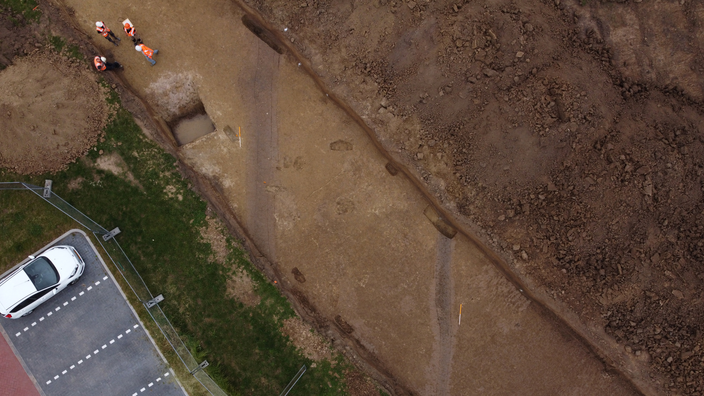Sections of a Roman-era road and canal recently unearthed in the Netherlands, almost by chance, near a Unesco World Heritage site, will disappear under a dike , according to archaeologists. Covered in mud, these remains nearly 2,000 years old were discovered during a routine study, prior to the reconstruction of a dike, by archaeologists who expected to find ruins of buildings dating back to to the Romans, but not of such magnitude. If they have nothing as imposing as the famous bridges and amphitheatres admired all over Europe, these traffic routes still provide valuable information on life in Roman times near this part of the Rhine,the river which marked the border of the Empire.
Read also: In Greece, the new golden age of archeology
"
The problem with Dutch archeology is that we don't have large stone buildings, we don't have a beautiful Pont du Gard
,
we only have mud,
" notes Eric Norde, an archaeologist in the office. RAAP.
"
But it is an incredible discovery
", he rejoices to AFP.
“
This is the first time that we find a main Roman road that connects the Roman city of Nijmegen with the western part of the Netherlands and the northern border of the Roman Empire,
” he says.
Near the site of the discovery, the city of Nijmegen hosted permanent Roman camps that were part of the Limes of Lower Germania, listed in July by Unesco as a World Heritage Site.
This transnational property is made up of military and civilian sites and infrastructures that materialized the border of the Roman Empire, almost all of which is buried underground in Germany and the Netherlands.
For 20 years, a European regulation has stipulated that any construction must be preceded by a soil study to protect any remains present underground.
Read also: Salaries, recruitments, prospects… For its 20th anniversary, Inrap is preparing for its transfer
Initially, archaeologists expected to find ruins of Roman dwellings, as there are a multitude of them in Europe, explains Eric Norde, before stumbling upon the remains of a road and a canal, a happy discovery that allows you to learn more about the road network from around 2000 years ago. The canal, more than 10 meters wide, probably linked the city of Nijmegen to the Rhine and was used to transport soldiers, supplies and construction materials, explains the archaeological office RAAP. He believes that the remains of this traffic route could have been part of the classified heritage, if they had been discovered earlier.
Eric Norde and his team are now busy excavating the area where the dike will soon be rebuilt at the expense of these ruins. "
All these elements will be lost,
" laments the archaeologist. Because the discovery does not call into question the reconstruction of the dike in this region of the east of the Netherlands still heavily affected by floods two weeks ago.
Despite their importance, the traffic routes were uncovered after the inscription of the site as a World Heritage site and therefore are not yet officially part of it, explains Eric Norde. Far from being defeated, the archaeologist sees this discovery above all as an incredible opportunity. "
The rest of the canal is safe, 1.5 meters underground,
" he says. “
The road is 60 kilometers long. And the Roman canal was to be 20 kilometers long. We still have plenty to discover,
”he concludes.

